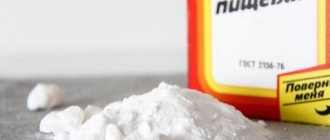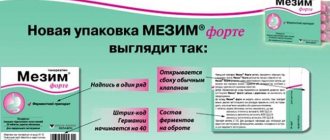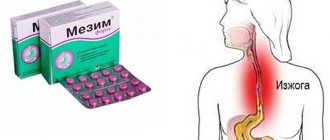Gastritis with high acidity is considered an acute and chronic disorder, also called hyperacid. Gastritis of this type is characterized by inflammation and increased secretory function of the gastric mucosa. To cure chronic gastritis, drug treatment would be more rational: herbal medicine, proper nutrition, diet and water treatments. But acute gastritis, accompanied by unpleasant symptoms, needs immediate help. The first aid kit of every gastritis patient should contain medications aimed at pain relief and relief during attacks.
With gastritis with high acidity, during periods of exacerbation, irritation of the mucous membrane occurs as a result of the action of hydrochloric acid. In this case, it will not hurt to take medications that will protect the mucous membrane from the effects of other damaging factors. One of the best modern medicines for the treatment of gastritis is smecta.
Prescription of the drug for high acidity
Smecta is a medicinal product made from natural raw materials that has the properties of adsorption and protection of the gastric mucosa from chemical and mechanical actions. The mixture contains glucose, vanillin, dioctahedral smectite and sodium saccharin. The main active ingredient was dioctahedral smectite, other components were added to improve the taste of the product.
The principle of action of the drug for diseases of the digestive tract
Smecta is irreplaceable for gastritis with high acidity, protects the stomach walls from the irritating effects of acid, and eliminates heartburn. It does not affect intestinal activity. The drug envelops the walls, restores the protective mechanisms of the mucous membrane, and reduces the effect of inflammatory processes. What is important is that the medicine is excreted from the body in its original form along with feces.
Gastrointestinal tract
An important point when using is the visible result immediately after the first use; in the case of gastritis with high acidity, the relief of symptoms begins 20-30 minutes after taking the drug. A one-time use will not solve health problems. To obtain a reliable treatment result, it is necessary to drink the full course, which is a minimum of 5, maximum of 7 days.
Scope of application of smecta
The drug helps remove toxic substances from the body and neutralize it, and is used for intoxication of the body. Refers to drugs that help with diarrhea. Smecta, or diosmectite, affects the restoration of the mucous membrane and normalization of the digestive tract. These are the main incentives to use a device with proven effectiveness.
A special feature of the drug is the ability to bind negative metabolic products and prevent the absorption of cholesterol, which has a positive effect on metabolic processes in the body.
Indications for use
Due to the widespread spread of unhealthy eating habits such as eating on the go, in a hurry, passion for fast food, shifting the diet towards foods high in fat, salt and chemical additives, people are increasingly complaining about painful symptoms such as heartburn , bloating, colic, indigestion. Does Smecta help cope with these symptoms? Based on the results of many years of reviews from consumers of this product, it has established itself as a highly effective and safe drug for eliminating digestive problems.
Smecta is prescribed for:
- digestive disorders arising from the consumption of low-quality products, taking antibacterial agents, exposure to pathogenic viruses and bacteria;
- inflammatory processes of the gastric and intestinal mucosa;
- flatulence and bloating;
- colitis, etc.
The principle of operation of Smecta is based on the fact that, on the one hand, it gently envelops the walls of the stomach and intestines, removes toxic substances from the body, and on the other hand, it enhances the production of mucus in the gastrointestinal tract, which protects the walls of the stomach from the harmful effects of hydrochloric acid. It is the excess of this acid that is the main cause of heartburn pain.
Indications and contraindications for the treatment of gastritis with high acidity
The drug is used to treat or relieve acute pain in adults and children. Smecta can be used while pregnant; before starting to use the drug, you should consult with your doctor.
The use of the medicine does not affect lactation during breastfeeding, it is not absorbed into breast milk, and there is no adverse effect on the baby.
Indications for use of smecta
It is recommended to take the drug in the following cases:
- diarrhea;
- pain arising from various diseases of the stomach or intestines;
- heartburn;
- inflammatory processes in the large intestine;
- gastritis, with inflammation of the stomach;
- bloating;
- duodenal ulcer.
Contraindications and possible adverse reactions during treatment
It is contraindicated to use smecta for treatment of intestinal obstruction and hypersensitivity to the elements of the drug; you need to be careful when using the device for pregnant women and the elderly.
Side effects of treatment include constipation, which can be eliminated by reducing the dose of the medication taken; allergic reactions in the form of rash, urticaria, itching and Quincke's edema are possible.
If, after using the drug, there is an elevated temperature, vomiting and no improvement in the patient’s condition, it is necessary to urgently stop treatment and immediately consult a doctor.
Contraindications and side effects
Smecta is not recommended for use if you have the following diseases and problems with the body:
- insufficient levels of sucrase and/or isomaltase enzymes,
- individual fructose intolerance,
- problems with intestinal patency,
- glucose-galactose malabsorption syndrome,
- hypersensitivity, individual intolerance to the medication and the ingredients present in its composition.
If the patient suffers from a history of severe chronic constipation, then he should use Smecta with great caution. It is recommended to do this under the supervision of your attending physician.
The most common side effects caused by Smecta include:
- mild constipation
- rash,
- itching,
- hives,
- angioedema.
Most of these side effects are caused by overdosing the drug or using it too often. After bringing the medication regimen in accordance with the instructions for use, all negative effects most often stop. If this does not happen, you need to stop using the medication and, if possible, visit your doctor.
Taking Smecta may have side effects
Application diagram and instructions
Depending on taste preferences, the medicine is purchased with orange or vanilla flavor. Smecta is issued portionwise in sachets in the form of a gray-white or gray-yellow powdery mixture with a pleasant aroma, from which a suspension is prepared and taken orally. The bag contains 3 grams of powder, which corresponds to the norm for a single dose.
The powder granules are small in size; you need to take your time and carefully pour the medicine out of the bag to avoid getting the granules on your clothes or respiratory tract.
Smecta dosage rules
When treating gastritis with high acidity, smecta is taken in a dosage of a sachet 3 times a day. For small children under 1 year of age, the medicine is prescribed no more than the norm, up to 2 years of age - a maximum of two, for children over two years of age no more than three sachets per day. The recommended duration of treatment is from 3 days to a week.
The powder must be diluted in the order specified in the instructions. If you dilute the mixture in the wrong order - first pour in the powder, then pour in water, or quickly pour the powder into water, the action will lead to the formation of unstirable lumps.
The medicine should be taken 30 minutes before meals; in the morning it is recommended to drink the diluted suspension on an empty stomach.
Rules for taking the medicine
For adults, smecta is diluted as follows: pour the mixture into a glass half filled with water and mix thoroughly, then drink the resulting suspension. For children, the mixture is diluted in a 50 ml baby bottle, given throughout the day, or the powder is added to cereals, purees, compote or baby food.
Smecta is a high-quality adsorbent drug that can be used in emergency cases without consulting a doctor. If the pain does not go away or your health condition worsens, you will need to visit a doctor to make an accurate diagnosis and prescribe treatment.
When prescribing several medications, the time interval between taking smecta and another drug will be at least 1-2 hours. Smecta reduces the ability to absorb other drugs, which leads to a weakening of the effect of other drugs.
It is forbidden to take smecta together with alcohol: drinks containing alcohol reduce the effect of the medicine.
Features of the drug use
Smecta should be taken 60–90 minutes after taking other medications. This way the drug will not interfere with the action of complexly prescribed medications.
Other features of the drug:
- For heartburn due to esophagitis, drink Smecta after meals.
- For heartburn against the background of gastrointestinal disorders and diseases not associated with esophagitis, the drug is taken 40–60 minutes after meals;
- Children are given a suspension; it can be mixed with porridge or other semi-liquid food. The daily dose is divided into 2–3 doses.
- When using the suspension by adults, the drug does not need to be diluted.
- For people over 12 years of age, the powder can be used. For heartburn, adults should dilute Smecta in 100–125 ml of water at room temperature for every 3 g of diosmectite. The contents of the sachet are poured into the liquid slowly with constant stirring so that no lumps form.
The medicine is taken one sachet at an equal interval of time for 5–7 days. If after a week the burning sensation behind the sternum continues to appear, you need to look for a pathological cause and treat the disease causing heartburn. Doctors can include Smecta in a comprehensive treatment regimen.
Do not exceed the daily dose of the drug. It amounts to:
- infants and infants – 3 g of diosmectite (1 sachet of Smecta/24 hours);
- for babies over one year old – 6 g;
- children from 2 years old – 6 g or 9 g;
- adolescents over 12 years old, adults – 9 g;
- pregnant and lactating women – 9 g.
In case of diarrhea, it is allowed to increase the daily dose. For diarrhea, adults need to drink 6 sachets, infants are given two sachets, and children over a year can drink 4 pieces of Smecta. The increased rate is consumed for three days. Then the amount of medication is reduced by half and taken for another two days. If the diarrhea does not go away, you need to consult a gastroenterologist.
Results of treatment with smecta for gastritis with high acidity
When taking the medication systematically for 5-7 days, positive dynamics in the patient’s well-being are guaranteed.
If taken in a timely manner, the medicine will help relieve acute pain and lead to the normalization of the proper functioning of the digestive tract. As a result of taking smecta, the resistance of the mucous membrane to various types of infections will increase, and diseases of the stomach and intestines that are inflammatory in nature will decrease.
A drug for providing symptomatic medical care for acute and chronic gastrointestinal disorders, Smecta, the method of administration of which in the form of a suspension is equally simple for children and adults, belongs to the category of intestinal adsorbents with high pharmacological activity.
A drug for providing symptomatic medical care for acute and chronic gastrointestinal disorders, Smecta, the method of administration of which in the form of a suspension is equally simple for children and adults, belongs to the category of intestinal adsorbents with high pharmacological activity.
In what cases is the drug prescribed?
Recommendations for the use of Smecta are based on the properties of the drug. The main component of the product is natural white clay powder from the class of aluminum silicates - dioctahedral smectite (diosmectite), consisting of mixed silicate of aluminum and magnesium, or, according to other information, mixed oxide of silicon and aluminum.
The medicinal qualities of Smecta are manifested in the ability of diosmectite to selectively adsorb toxic substances and create a protective barrier for the mucous membrane of the gastrointestinal tract, increasing mucus production.
The drug, which has a layered crystalline structure, is an excellent enterosorbent that slows down the rate of absorption of pathogenic bacteria and toxins into the bloodstream. In recommended doses, it has no effect on intestinal motility, is not absorbed by the body and is excreted naturally unchanged.
Diosmectite - a grayish-white or yellowish-tinged powder - is packaged in bags and then in cardboard boxes of 10 to 30 pieces. Each package contains:
- dioctahedral smectite - 3 g;
- glucose - 0.749 g;
- saccharin sodium - 0.007 g;
- vanillin - 0.004 g.
Vanilla is often supplemented with orange flavoring to enhance the flavor. This is especially important for children.
The instructions recommend using Smecta for diarrhea, the prolonged course of which can lead to dehydration. Smecta is prescribed for diarrhea of any etiology:
- allergic, medicinal;
- infectious (bacterial or viral);
- associated with stomach and intestinal disorders (malnutrition, food quality, poisoning);
- associated with a complex of gastrointestinal diseases (gastric and duodenal ulcers, gastritis);
- autoimmune (atopic dermatitis, rheumatoid arthritis), etc.
Smecta is prescribed for heartburn, for the symptomatic treatment of flatulence, bloating and abdominal discomfort. The medicine is one of the few that can be taken for diarrhea without visiting a doctor, if the stool is not too frequent and profuse and lasts no more than a day. In other cases, there is no need to postpone your visit.
Recommendations for use stipulate only a few contraindications for Smecta:
- intestinal obstruction;
- malabsorption (syndrome of impaired intestinal absorption);
- fructose intolerance;
- sucrase-isomaltase deficiency;
- idiosyncrasy to the components of the drug.
Long-term use of this drug (more than 7 days) or a significant overestimation of the dose reduces the activity of intestinal motility, which can lead to constipation. Since Smecta is an enterosorbent, its administration should be separated by 1-2 hours from the administration of other medications, otherwise due to adsorption the rate of their absorption and effectiveness will decrease.
pharmachologic effect
The action of the drug is based on the properties of its main components. To stop heartburn, it is necessary to take substances that neutralize the acid, which provokes a feeling of discomfort, a burning sensation in the chest. Smecta is also used for heartburn because it relieves other symptoms of problems with the stomach and intestines.
The main action of Smecta is adsorbent. Penetrating into the intestines, the drug stabilizes the mucous barrier, forming polyvalent bonds. The protective properties of mucus are increased, protecting the gastric mucosa from damage by hydrochloric acid of gastric juice. In addition, the absorption and elimination of pathogenic microorganisms occurs.
Interesting! Diosmectite, which provides the pharmacological effect of the drug, is extracted from white clay in Sardinia. This is the only source of this substance on earth.
Indications for use
Heartburn is not the only disease for which Smecta is used. Indications for prescribing the drug are also:
- Acute diarrhea. Smecta successfully fights the symptoms of various forms of intestinal disorders that provoke the disease. These include problems with stool, most often diarrhea, pain in the abdomen, loss of appetite, sudden weight loss, nausea after eating. The drug envelops the intestines and reduces the inflammatory process.
- Chronic diarrhea. The main symptom of the disease is frequent bowel movements (from three times a day), the stool is liquid, mushy, and may have a strong unpleasant odor and a specific hue. Along with this, flatulence, bloating, and stomach pain may periodically appear. Smecta is able to improve intestinal function and prevent exacerbation of the disease for a long time.
- Other diseases of the gastrointestinal tract as part of complex therapy. Many pathologies of the digestive system are associated with disorders of the acidity of gastric and intestinal juices. These include gastritis, duodenitis, stomach and duodenal ulcers. Smecta provides assistance as part of a comprehensive treatment for most of them. It helps with belching, nausea, vomiting, and problems with stool.
Smecta is suitable for the treatment of these diseases for both adults and children. You just need to follow the manufacturer's recommendations.
How to take the medicine?
Many consider the method of using Smecta to be a disadvantage of the drug, since before taking it, smectite must be dissolved in warm boiled water or milk, liquid milk and fruit porridges (for children). The powder is gradually poured into the liquid, stirring constantly. It will not dissolve completely; as a result of mixing, a suspension is formed. You just need to take into account that there is no other way to get the medicine, and diosmectite particles that are not completely dissolved have a smooth surface and cannot damage the intestinal mucosa in any way.
Smecta does not pose a danger to either pregnant or breastfeeding women.
Common intestinal disorders do not require long-term use of the drug. 1-3 days is enough. Diarrhea of other etiologies requires a longer course of treatment, but no more than a week. The medicine is taken in between meals. For a number of diagnoses, for example, esophagitis, it is recommended to take it immediately after meals. Questions about administration and dosage, persistence of worsening symptoms or the emergence of new disorders are a reason to consult a specialist.
The use of smectite for vomiting is not considered appropriate. The remedy is not able to stop vomiting. Vomiting is part of the body's defense mechanism and is aimed at removing poisons and toxins.
In case of toxicity with alcohol breakdown products, Smecta can help according to the usual scheme. But the daily dose cannot be increased, as this is associated with potential constipation.
In cases of acute and chronic food poisoning, as well as if toxins enter the body through the gastrointestinal tract, the medicine, like all adsorbents based on clay materials, “turns on” its gastroprotective properties.
Can this product be given to a newborn?
Everything that happened before birth and during childbirth is quickly forgotten. Parents begin to worry about the child's development process. His body, including his stomach, needs time to adapt, train and work consistently. During this period, he can take 5-7 ml per feeding. Excess nutrition creates an unbearable and unnecessary burden for the baby. The stomach pushes out excess (the baby burps). Due to the underdevelopment of the child's gastrointestinal tract, problems with bowel movements occur: constipation or diarrhea. Colic prevents the child from sleeping, he is capricious.
Pharmacies offer dill water for such complaints. But it is good for flatulence and does not affect gastrointestinal syndromes. Is it possible to give Smecta to a newborn? It is possible, but after consulting with a pediatrician. Only he will determine the individual dose and frequency of administration in the specific case.
The doctor may reduce the dose prescribed by the instructions. Sometimes pediatricians recommend reducing the amount of liquid to 50 ml when mixing smectite with infant formula. The dose is divided into several doses. In some cases it is increased. The course of treatment is on average 3 and maximum 7 days.
Smecta is a natural drug that acts gently and carefully. The baby's fragile ventricle receives additional protection in the form of increased mucus. As a result, pain and discomfort are eliminated. Smecta also has a second, “captivating” effect, when it adsorbs toxins, bacteria and viruses that cause discomfort in the child. The drug is excreted from the baby’s body without changes, which indicates the absence of its absorption by the body.
Why is the drug so popular?
The popularity of Smecta is easily explained:
- The presence of adsorbent and protective properties, in which, in recommended doses, the drug does not affect intestinal motility.
- Successful long-term use for diarrhea of various etiologies, symptomatic treatment of heartburn, food poisoning and intoxication.
- Use by different age categories of patients, including newborns.
- No interference with X-ray examinations of the stomach and intestines, since the drug does not stain the stool.
- Availability of popular analogues with the same active substance:
- Neosmectin (containing diosmectite - 3.76 g);
- Diosmectite;
- Bent;
- Neosmectin with orange flavor (for children), etc.
If we compare Smecta with other antidiarrheal drugs, then, having the same property of binding harmful substances and pathogenic microorganisms, they do not provide the high protective effect that is inherent in this drug. In addition, some of them have restrictions in use and are not prescribed to children under 3 years of age or more.
The drugs Polyphepan, Enterosgel, Polysorb, Sorbentomax, Filtrum, Enterodes, Almagel and the ancient remedy - activated carbon - are also enterosorbents. Enterosgel, for example, has a selective effect similar to diosmectite, adsorbing only toxins, poisons, bacteria, viruses and without affecting intestinal motility. But it was created to treat poisoning of various origins, since it easily removes harmful decomposition products. When choosing between them, you need to know that in cases of diarrhea and flatulence, you should choose Smecta, and in cases of poisoning symptoms, Enterosgel.
The drug Imodium (the active substance is loperamide) has a completely different mechanism of action than Smecta. It is not aimed at eliminating the cause of diarrhea, but only slows down peristalsis and reduces the tone of the intestinal muscles. It has more contraindications: infectious diseases of the gastrointestinal tract, intestinal inflammation, gastric ulcer, pregnancy, lactation, childhood.
For diarrhea, Linex is often prescribed. What is more effective: Smecta or Linex? It is impossible to answer unequivocally. Linex contains 3 types of live bacterial cultures that regenerate the body's microflora and therefore improve the condition of the gastrointestinal tract. The drug has no antidiarrheal activity. Both drugs can be taken, maintaining the interval between doses.
For children with diarrhea, food allergies, heartburn, rotavirus infection, Smecta is preferable. The drug is a reasonable alternative to drugs containing loperamide due to its greater effectiveness, favorable results, safety, lack of age restrictions and a large list of contraindications.
Food poisoning and diarrhea are very unpleasant conditions, regardless of the circumstances under which it occurs. For such annoying cases of illness, it’s a good idea to have a proven remedy in your first aid kit that will quickly improve your well-being. Understand the information on how to take Smecta, what unpleasant symptoms it can relieve - and you will always know what to do in case of sudden digestive upset. After reading the article, you will become familiar with the rules for taking this medicine for the treatment of adults and children with various disorders of the digestive tract.
Analogs
Smecta is a fairly expensive foreign-made drug, so it is understandable that patients want to replace it with a cheaper and more accessible domestically produced analogue. The modern market offers a large selection of products that successfully treat stomach diseases. However, only two domestic drugs are absolutely identical analogues with the same active ingredient:
- Neosmectin
- Diosmectite
They have the same indications, contraindications and dosage regimen. Their main advantage is their lower price, and Neosmectin manufacturers even claim that it does not affect intestinal motility.
After reviewing the advantages and disadvantages of Smecta, we can conclude that the product is made from natural ingredients and allows you to quickly and effectively get rid of the symptoms of diarrhea, flatulence, nausea and vomiting, and relieves acute symptoms of heartburn. According to the instructions for use, the drug is easy to use, and its action is aimed at eliminating painful sensations in the stomach, normalizing the mucous membrane and removing toxins. The main advantage of this medicine is that the active substance works only in the lumen of the gastrointestinal tract, does not accumulate in the body and is not absorbed into the general bloodstream. This makes Smecta the drug of choice for severe digestive pathologies and for the most delicate patients - newborns, children, pregnant and nursing mothers.
What does Smecta help with?
This natural enterosorbent has a double therapeutic effect. The medicinal solution, entering the stomach and moving further, envelops the mucous membrane of the digestive system and protects it from further irritating effects of toxins. As it moves through the gastrointestinal tract, the main active ingredient of the medicine - dioctahedral smectite (special porous clay) - adsorbs harmful substances that cause intoxication of the body.
Thanks to these properties and effective, rapid action, “Smecta” is used to treat a wide range of diseases of the digestive system:
- diarrhea caused by poor-quality food, long-term use of antibiotics, exposure to allergens;
- intestinal dysbiosis;
- for food poisoning;
- for gastritis of the stomach, esophagitis (inflammation of the esophageal mucosa);
- in the complex therapy of dysentery, salmonellosis, intestinal flu, cholera and other severe infectious diseases;
- to eliminate heartburn, bloating, and intestinal flatulence.
How to drink Smecta
In order for the use of the medicine to have a quick result, read the general recommendations on how to dilute Smecta. This medicine is a powder packaged in sachets for single use. How to take Smecta correctly? To prepare the medicinal mixture, add the powder to water, stir it well and drink. The suspension should be prepared immediately before use, do not dilute it for future use and do not allow it to be stored for many hours. It is recommended to take the medicine between meals, and for esophagitis - after meals.
For adults
The optimal dosage of the drug for adult patients does not exceed 3 sachets per day, but in case of acute diarrhea in the first 1-2 days of the disease it can be doubled as prescribed by the attending physician. For a single dose, you need to dissolve Smecta in half a glass of lukewarm drinking water. You should not self-medicate and take a much higher dose of medication - although the drug is practically harmless, it sometimes causes constipation.
For children
Doctors sometimes ask whether Smecta is suitable for newborns. This drug of natural origin can be taken even by infants, starting from the age of one month. Smecta for children can be diluted not only with water, but also with juices, compotes, broths, and milk formulas. For treatment, the contents of the sachet must be dissolved in 50 grams of liquid and given to drink. Find out how to take Smecta for a child, depending on the identified disease and the age of the baby.
| Childhood | Indications for use | |
| Acute diarrhea | Other indications | |
| From 1 month to 1 year | The first 3 days of illness - 2 sachets throughout the day, then - 1 sachet per day | 1 sachet per day |
| From 1 year to 2 years of age | The first 3 days – 4 sachets per day, then – 2 sachets | 1-2 sachets throughout the day |
| Over 2 years old | 2-3 sachets per day | |
Rules for taking Smecta
The instructions for the drug contain 2 ways of using it, depending on the purpose of therapy:
- treatment for acute diarrhea;
- taken for other symptoms.
Before taking Smecta for heartburn, we recommend that you consult a doctor to determine the exact cause of the burning sensation. Heartburn may indicate the development of serious diseases of the stomach and esophagus.
Note: heartburn that occurs 1-2 or more times a week is a reason to consult a gastroenterologist. There is a high probability that the symptom indicates the presence of gastroesophageal reflux disease, which can have dangerous complications. Heartburn that occurs less than once a month is most likely the result of poor diet.
For heartburn in adults, the drug in the form of a ready-made suspension is taken three times a day, 1 sachet at a time. Before opening the package of medicine, you need to crush it with your fingers to give the suspension a uniform consistency. If necessary, the suspension can be washed down or pre-dissolved in a small amount of water.
If heartburn is a symptom of esophagitis, it is recommended to drink Smecta after meals. In other cases, the drug is taken between meals.
If the drug is used to treat children, the suspension can be mixed with semi-liquid food (porridge, puree, broth). In childhood, the drug is prescribed 1-3 packets per day, depending on the age of the child. When treating children, you cannot do without consulting a pediatrician!
When using Smecta in powder form, it is diluted in clean water. The powder must be stirred until the solution becomes homogeneous. For heartburn, adults drink 3 packets of Smecta during the day.
We advise you to find out how alcoholic gastritis manifests itself.
Find out why a pancreatic elastase level test is performed.
Read: how Nolpaza works.
Possible side effects
When taking Smecta, the development of adverse reactions is possible, so its uncontrolled use is extremely undesirable. The drug must be prescribed by a doctor.
Side effects to the medication occur rarely and pass quickly; they are mainly manifested by disturbances in the functioning of the digestive tract. The most common negative effect is constipation, although the instructions say that Smecta does not affect intestinal motility. If constipation occurs, it is recommended to reduce the dose of the drug or find an alternative to the drug.
In more rare cases, Smecta causes flatulence and vomiting. Several cases of allergic reactions to the drug in the form of skin rash and itching have been reported. Angioedema may develop.
Important! The likelihood of developing constipation while taking Smecta increases if the recommended dosage is not followed and the daily dose of the drug is exceeded.
Taking medication during pregnancy
Smecta is a drug approved during pregnancy. It is recommended that expectant mothers take it for heartburn according to the dosage indicated in the instructions - up to 3 packets per day. The drug is also approved for use by women during lactation.
High efficiency, affordable price and pleasant taste (in comparison with other sorbents) explain the presence of Smecta in many home medicine cabinets, and thanks to the new form of release of the drug, it is now convenient to include it in a traveler’s first aid kit. The medication helps eliminate discomfort associated with disruption of the digestive tract, including heartburn. However, it is worth remembering that a burning sensation can be a symptom of gastrointestinal diseases, which are dangerous to ignore.
How to use Smecta
It is better to separate the use of this drug from the use of other medications by at least half an hour, because when taken simultaneously, it will adsorb the drugs. The dosage of enterosorbent does not depend on the patient’s age (with the exception of one-year-old children) or on the patient’s body weight; it should be determined by the severity of intoxication of the body in each specific case. Read the information on how to take Smecta correctly for various causes of illness.
In case of poisoning
"Smecta" is very effective for food poisoning. This drug is often used in cases of alcohol intoxication. Once in the digestive tract, the medicine takes on the toxins that have penetrated here, adsorbing harmful substances even from the gastrointestinal mucosa. The special mucus created by the drug lines the food tube, allowing the cells to recover after a malfunction of the organ.
During its action, the drug eliminates dysbiosis and creates a favorable environment for the natural beneficial intestinal microflora. In case of poisoning, you should take Smecta three times a day between meals, dissolving 1-2 sachets for each meal. The course of medication is set depending on the severity of the condition, ranging from at least 3 to 5-7 days.
When vomiting
The drug is taken for vomiting if it is caused by the body's reaction to toxic substances and is not a symptom of a disease of the digestive system. In such cases, before using Smecta, the patient’s stomach is washed so that the enterosorbent acts directly on the irritated mucous membrane more quickly. Taking the drug for these symptoms of digestive system disorders should not exceed the recommended daily dose. Use should be stopped if vomiting has stopped and the patient does not experience nausea, diarrhea, etc.
For nausea
For this symptom, Smecta is prescribed if nausea is a manifestation of food poisoning. Sometimes this drug can be prescribed to pregnant women if they often suffer from toxicosis. A patient who wants to get rid of nausea with the help of Smecta should monitor the frequency of bowel movements sufficiently to prevent prolonged constipation.
For diarrhea
Diarrhea (the popular name for the disease is diarrhea) is the most common disorder of the gastrointestinal tract for which enterosorbent is used. How to take Smecta to get rid of diarrhea? Depending on how acute the patient’s diarrhea is, taking the drug can last from 3 to 7 days. The dosage of the medicine was discussed above. “Smecta” can be prescribed for diarrhea even in infants. To treat infants, the contents of the sachet should be diluted with 50 milliliters of water and the resulting suspension should be given to the child to drink a teaspoon at a time throughout the day.
For constipation
In case of such a malfunction of the digestive system, Smecta is not prescribed; it will only aggravate this condition. If the patient has a previous history of prolonged constipation, he should definitely inform the doctor about this. In such cases, if it is necessary to take Smecta, the drug is taken with caution, observing the frequency of stool. If constipation occurs during the use of this drug and, for medical reasons, treatment must be continued, it is necessary to reduce the dose of enterosorbent.
For heartburn
Heartburn is a common manifestation of inflammatory processes in the esophagus. The use of Smecta for such an unpleasant symptom has a softening effect. This is due to the fact that the action of the drug increases the volume and density of mucus covering the gastrointestinal tract, thereby alleviating irritation. A special feature of using Smecta for heartburn is that to achieve a good therapeutic effect, this suspension must be drunk immediately after eating.
Instructions for use
The instructions for Smecta are simple, but require strict adherence. The drug is available in powder form. Before use, it must be dissolved in water at room temperature. It is strictly not recommended to use the drug by diluting it in cold water.
For heartburn that occurs after overeating, eating fatty, fried foods, it is enough to drink one sachet. If you do not feel better after a few hours, drink another one. If heartburn is a symptom of another gastrointestinal disease, Smecta is prescribed as part of complex therapy, then the dosage depends on the patient’s age:
- up to one year – 2 sachets per day;
- up to 14 years – 4 sachets per day;
- adults – up to 6 sachets per day.
This dosage is maintained for the first one to three days, when inflammation is especially acute, discomfort and pain are severe. Along with Smecta, you need to take anti-inflammatory, painkillers, and antacids. Then the number of sachets per day gradually decreases. The total duration of taking the drug should not exceed 10-12 days.
Advice! For chronic diarrhea, you can regularly take a course of Smecta to prevent exacerbation. The minimum dosage is prescribed; this is done by the attending physician.
During pregnancy and lactation
The natural composition of Smecta makes its use safe both during pregnancy and breastfeeding. No dosage adjustment is required. Women in this position must follow the general recommendations from the instructions. Nevertheless, the body of the expectant mother is faced with serious changes, so the reaction to any drug can be individual. When diarrhea, heartburn, and other gastrointestinal diseases appear, self-medication is dangerous. Only the attending physician can prescribe any drug, including Smecta. He determines whether Smecta helps or not, then makes additional recommendations.
Important! Often in pregnant women, heartburn occurs due to overeating, because women during this period tend to have an increased appetite. You can keep Smecta in your medicine cabinet; you can take it once without a doctor’s prescription.
Smecta during pregnancy and lactation
According to the annotation for the drug, it can be used to treat ailments of the digestive tract in women during pregnancy and lactation. This permission is logical based on the mechanism of action of Smecta powder, because it is not absorbed into the blood and is not excreted in breast milk. After passing through the gastrointestinal tract, the enterosorbent is completely eliminated from the woman’s body without affecting the child. Although Smecta is actually a harmless drug, during pregnancy it should be taken only as prescribed by a doctor and for no more than 3 days, because it can cause constipation.
Pregnancy and lactation
The period of bearing a child is not only joyful and pleasant moments. Very often, a woman is worried about toxicosis, especially in the early stages, and various intestinal disorders. Smecta during pregnancy and lactation is one of the few safe drugs for digestive problems. However, it should be borne in mind that, by binding harmful substances, the suspension moves slowly through the intestines and can cause constipation. This is especially true for late pregnancy. Therefore, if there is a tendency to constipation, Smecta is prescribed to pregnant women with caution, and the course of treatment does not exceed 7 days. Pregnancy and breastfeeding are very important periods in the life of a woman and child, so all medications must be selected properly, in the right dosage, and completely eliminate the unpleasant symptoms of heartburn.











